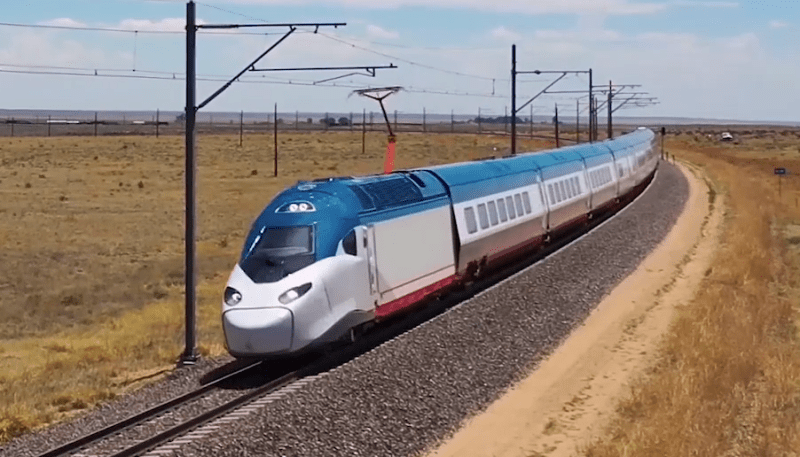Note: GJEL Accident Attorneys regularly sponsors coverage on Streetsblog San Francisco and Streetsblog California. Unless noted in the story, GJEL Accident Attorneys is not consulted for the content or editorial direction of the sponsored content.
An alliance of pro-oil, anti-rail Republicans and parochial, Southern California Democrats are ratcheting up efforts to divert some $4.8 billion slated for the electrification of California’s High-Speed Rail Project in the Central Valley to Metrolink, Southern California's Commuter rail system.
The California High-speed Rail Authority is building over 100 miles of laser-straight tracks in the Central Valley that will one day become part of a 220 mph-plus system connecting all of the state's major cities. At issue: whether to finish this spine of the system or stop short of electrifying it and instead run slow, polluting diesel trains on the new tracks. The argument from the Southern California politicians is that the electrification money can be better spent on vague improvements to Metrolink.
But if the money is diverted, it would blow up America's last chance to reconstitute an industry it once dominated: intercity passenger rail.
Pullman and Budd were once household names in the U.S. These and other major American companies employed tens of thousands of people in high-paying manufacturing jobs, making passenger trains for both domestic and overseas markets. Today, intercity rail is completely dominated by firms from Europe and Asia. A study from the Center on Globalization Governance and Competitiveness estimates that for every $1 billion invested in rail work, 24,000 jobs are created. Countries overseas invest in it. The U.S., until now, has not. As a result, U.S. firms can't hope to compete.
For America to compete in HSR, they need the Central Valley spine to be electrified, so it can serve not only as a major passenger rail corridor but also as a test track for the development of new train designs. During a hearing last year, Assemblymember Laura Friedman, one of the politicians leading the charge to divert the funds for electrification, dismissed this, saying that HSR is a known quantity that doesn't need testing.
As with so many of her rationales for moving the money to SoCal, she couldn't be more wrong.
The lead image on this post is of Amtrak's "Avelia Liberty," the new train for its Acela service between Boston and Washington. The Avelia is basically a copy of France's TGV, designed and engineered by French rail giant Alstom. The Avelia was assembled in Hornell, New York because of "buy America" requirements. Like other TGVs, it is capable of 220 mph. But Amtrak will have to accept it without testing it beyond 165, because that is the maximum possible track speed anywhere in North America.
Compare that to a test Alstom conducted in 2007 in France: they got a souped-up TGV to hit 357 mph (see video below). The test helped them figure out how to boost in-service speeds from 186 mph to 220 mph, today's standard for HSR outside of the U.S. Most engineers Streetsblog has talked with say 250 mph will soon become the new standard.
But it takes a long, straight track to develop and test high-speed trains. The only track in North America sufficiently long and straight enough for true high-speed rail testing is the one now under construction in the Central Valley.
The 119-mile segment will allow a "high-speed trainset to accelerate to 242 miles per hour," and cruise for about five minutes before it has to start braking, explained the California High-speed Rail Authority's Annie Parker. "We achieve a maximum testing speed of 242 mph in 44 miles from a standing start." This all assumes relatively gentle accelerations and a decent safety buffer. "At 242 mph we are covering over four miles per minute, so in five minutes we travel over twenty miles," she added.
But if the electrification money is taken, only conventional diesel trains will be able to run on that Central Valley track--belching out carcinogens at a relatively sedate 125 mph. And U.S. companies will continue to be locked out of this high-tech market.
If Southern California's politicians are sincere about wanting to improve commuter rail, they should work on diverting money from endless and fruitless freeway widenings. Because it's not even clear how the electrification money could be spent legally on Metrolink. In all likelihood, they will end up with nothing to show for their effort except the damaged lungs of the Central Valley's children and the continued absence of the U.S. in an important global industry.






